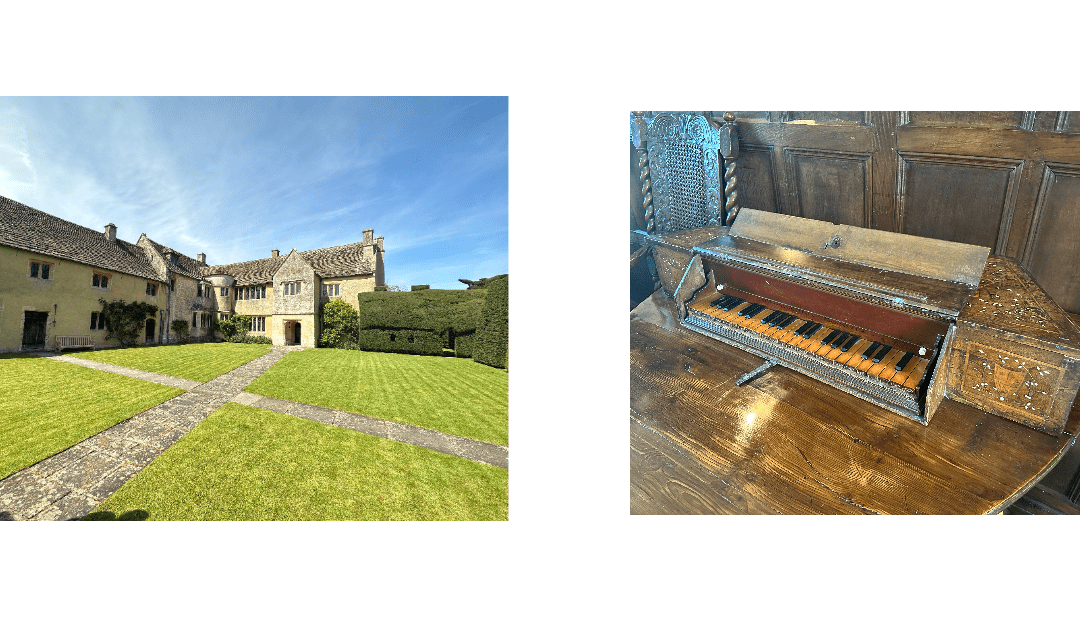On Wednesday Claire and I visited Westwood Manor, a nearby National Trust property. King Ethelred II (the Unready) granted the land to his thegn, Alfnoth in AD983. For three centuries three families lived on the manor: Culverhouse (1434 – 1500), Horton (1518 -1609) and Farewell (1616-1695). A part of the Manor House occupied by Henry Culverhouse and his son Thomas is now part of the west range. Most of the existing building was built by the Horton family.
Of course I can’t explore a house of this age without imagining Sir Anthony Standen living in similar accommodation. There is a harp, spinet, and virginal in the Great Parlour. They are in perfect working order, and the virginal was made in Modena, Italy, in 1537. My 11th great-grandfather Edmund Standen, Sir Anthony’s father, was nine when the virginal was made.
In chapter four of The Spy who Sank the Armada, a string quartet of three lutes and a virginal are playing at a reception in the English embassy in Paris. Many readers have kindly mentioned my attention to detail, but I didn’t know until visiting Westwood Manor that the quills which pluck the strings of a virginal were made from raven feathers.
The gardens, accessed through a topiary cottage, were beautiful and peaceful. There are two large ponds which are apparently home to Great Crested newts. If they are, then the newts are even more elusive than the newt(s) in our garden pond. We have a small black one which both Claire and I have seen, albeit only once. I have fond childhood memories of playing with the newts in a friend’s garden pond. Perhaps newts have been learning about counter-surveillance techniques, as Sir Anthony had just before that reception in Paris.
I wrote yesterday about visiting Edinburgh again and Holyrood Palace, where Sir Anthony had saved the life of Mary Queen of Scots. Since I intend to set the fifth book of the Sir Anthony Standen Adventures in Paris, I think another research visit there is called for.

